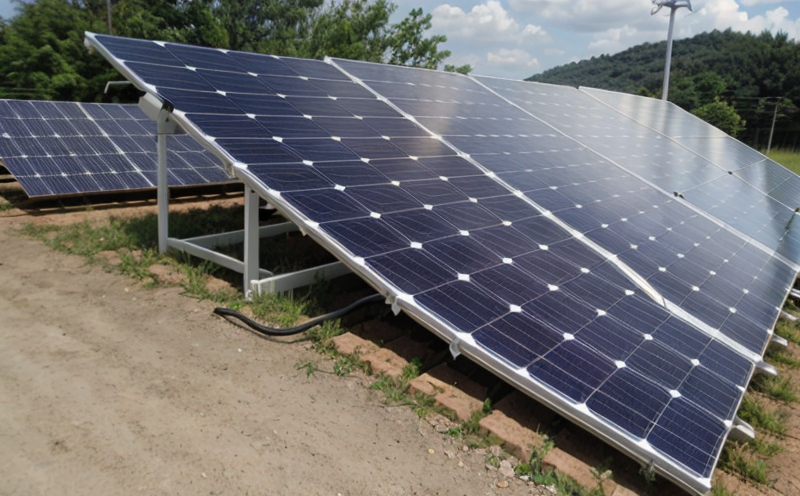IEC 60904-13 Electroluminescence Imaging Testing
The IEC 60904-13 standard is a cornerstone of photovoltaic (PV) module testing, specifically designed to evaluate the integrity and efficiency of solar panels through electroluminescence imaging (EL). This method allows for the detection of internal defects within PV modules that are not visible during visual inspections or other conventional tests. The test involves applying an electrical field across the module while capturing images of light emitted from within the cell structure, highlighting areas with recombination centers where electrons and holes recombine inefficiently.
EL testing is critical for identifying potential hotspots, micro-cracks, and delamination issues that can significantly impact a solar panel's performance over its lifetime. By using this technique, manufacturers and quality assurance teams can ensure the highest level of reliability before deploying photovoltaic systems into real-world applications.
The IEC 60904-13 standard provides detailed guidelines on specimen preparation, equipment requirements, and data acquisition procedures to ensure consistency and reproducibility. Specimens are typically prepared by removing any protective layers from the front or back of the solar panel, ensuring that all conductive contacts are exposed for accurate electrical measurement.
Apparatus used in IEC 60904-13 testing includes specialized EL cameras capable of capturing high-resolution images at various wavelengths. The test setup involves connecting the camera to a data acquisition system and applying an appropriate voltage across the cell, often ranging from 20V to 80V depending on the module's specifications.
The captured images are then analyzed using software tools provided by manufacturers or third-party suppliers. These tools help in identifying specific patterns indicative of internal defects. The acceptance criteria for EL testing typically involve setting thresholds based on pixel intensity and distribution, which serve as a benchmark for assessing the overall quality of the module.
| Standard Name | Version |
|---|---|
| IEC 60904-13:2017 | Electrical characteristics of photovoltaic (PV) modules — Part 13: Electroluminescence imaging testing method for internal defect detection |
IEC 60904-13 is widely recognized as the most comprehensive standard for EL testing, providing a robust framework that ensures accurate and reliable results. Compliance with this standard not only enhances product quality but also supports regulatory requirements in various jurisdictions.
- Accurate identification of internal defects such as micro-cracks, delamination, and hotspots.
- Non-destructive testing method that preserves the integrity of the solar panel.
- Compliance with international standards ensuring high-quality PV modules.
- Supports quality control processes in manufacturing and supply chains.
Applied Standards
| Standard Name | Version |
|---|---|
| IEC 60904-13:2017 | Electrical characteristics of photovoltaic (PV) modules — Part 13: Electroluminescence imaging testing method for internal defect detection |
The IEC 60904-13 standard is the most widely recognized and adopted protocol for electroluminescence imaging testing in the photovoltaic industry. This standard ensures that all tests conducted are consistent, reproducible, and meet the highest quality standards.
Why Choose This Test
- Accurate detection of internal defects in photovoltaic modules without destroying them.
- Supports compliance with international standards, enhancing product quality and reliability.
- Facilitates quality assurance processes in manufacturing and supply chains.
- Provides detailed insights into the performance and durability of solar panels.
Customer Impact and Satisfaction
- Enhanced product reliability leading to customer satisfaction.
- Increased trust in the quality of photovoltaic products.
- Supports regulatory compliance, reducing the risk of non-conformity penalties.
- Improves brand reputation through consistent high-quality output.





